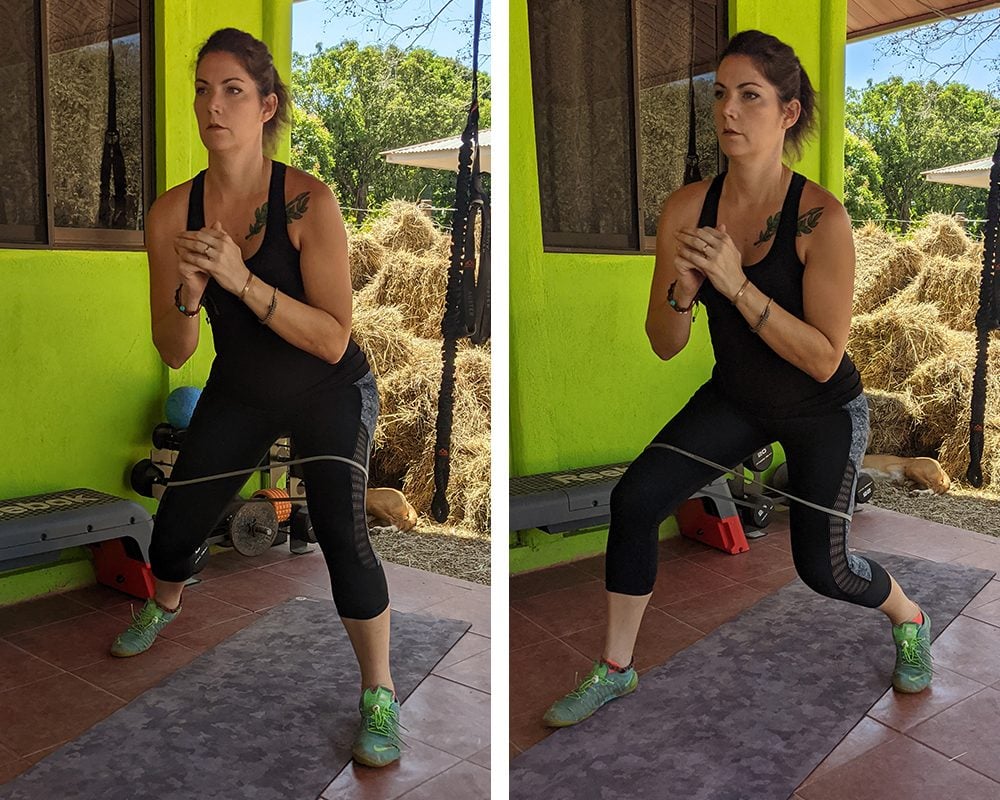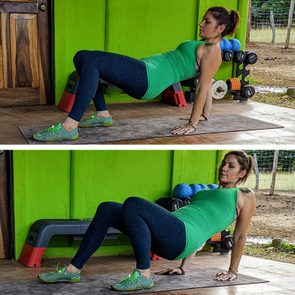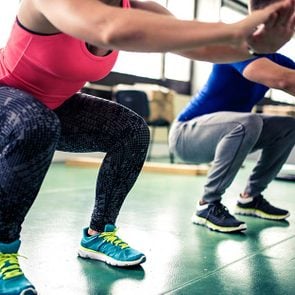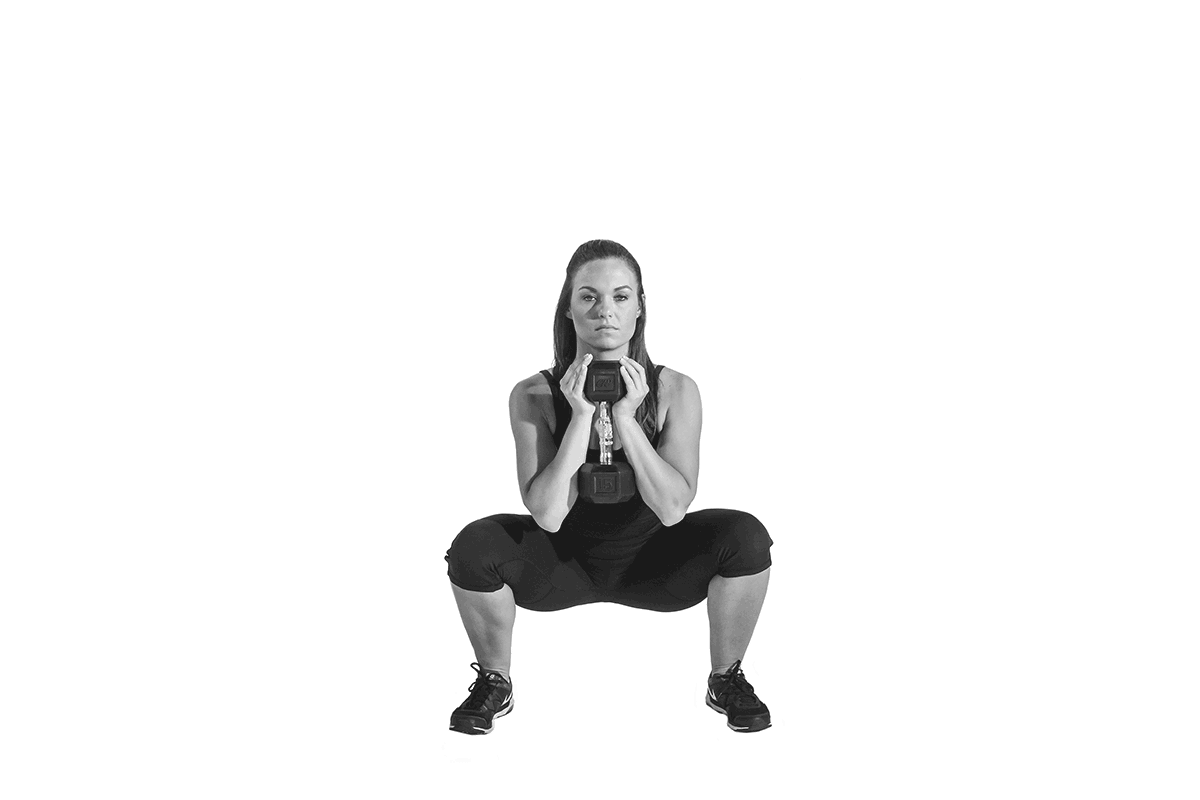Monster Walk: Why This Exercise Works and How to Do It—Safely
Updated: Jun. 23, 2021
Activate your hip abductors with simple and safe resistance band workouts, or monster walk exercises, to build strength and prevent falls.
Our editors and experts handpick every product we feature. We may earn a commission from your purchases.
What is the monster walk?
If the name “monster walk” leaves you scratching your head—or a little unnerved—don’t feel bad. There’s no obvious reason this exercise got slapped with the moniker. Unless maybe you think about how you might “act like a monster,” playfully creeping up on your niece or nephew—slightly crouched and low, hands out front, taking wide, staggering steps toward your “prey.”
(Here’s what you need to know about the crab walk exercise.)
And even though “monster walks” sound odd, they’re a surprisingly accessible exercise for almost everyone, offering an easy, home-based option for targeting the hip abductors. These are the muscles that work in conjunction to help your legs move away from the centerline of your torso.
“Monster walks are a great way to build strength through the hips and its supportive musculature,” says CJ McFarland, head strength and conditioning coach for Onnit Gym in Austin, Texas. “By increasing strength in this region, you’re less prone to injury when performing squats, deadlifts, or other compound movements.” McFarland adds that because these abductor muscles tend to be targeted less often than the larger muscles of the quads, hamstrings, and glutes, working them regularly can help improve the stability of your hips, which can help prevent falls in day-to-day life.
(Try these balance ball exercises that will also up your stability.)
Monster walk equipment
To perform a monster walk, you need some form of resistance band or tubing. Your best option is the type of small, looped band that’s designed for this type of leg exercise. However, if you don’t have access to a small, looped band, try tying a longer band or tubing so that when you wrap the band around your thighs just above your knees, it’s taut (but not overly tight) when your feet are hip-distance apart.
While pretty much any type of resistance band can work—and you can pick up a set of varied-resistance loops, like LetsFit resistance loop exercise bands ($5)—it’s important to realize that they’re not always super comfortable. If you’re wearing shorts, you may find that the tubing pulls on your leg hairs or irritates your skin. McFarland points out that the Mark Bells Hip Circle ($20) is the most comfortable band he’s personally used because it doesn’t pull on the skin or hair.
(This is the best exercise equipment for at-home workouts.)
Monster walk resistance band placement
The main difference between variations on the monster walk is where you place the resistance band. Common placements are right above the knees at the lower part of the thighs, around the legs just above the ankles, or a combination of the two. Really, which placement you use should be based on your own strength and familiarity with the exercise.
“The further the resistance band from the lever, the more difficult the movement will be,” explains McFarland. In this case, the lever is your hips, so the farther away the placement is from your hips, the greater the challenge. “Start with one band at the knee, progress by moving it to the ankle, and then combine both band placements for maximum difficulty,” he says.
How to add monster walks to your workout
The thing about this exercise is that it’s incredibly accessible because it’s low risk, which means it can be performed by just about everyone, according to McFarland. Monster walks are also versatile. (This is the best workout for every age.)
For instance, you can include the move at the start of your lower-body workout as part of a “primer” to help get your brain and body started working together before tackling more complex exercises. This is important for injury prevention because a primer “sets the stage” for the meat of your routine, signaling to your brain how to prepare to fire up the necessary muscles when you undertake greater challenges.
But because you can also increase the resistance substantially by using heavier resistance bands and changing the placement of the bands, monster walks can be incorporated into the bulk of your lower-body workout. When you increase the resistance of your monster walks, you help grow and strengthen the hip flexor and abductor muscles. Specifically, McFarland says that monster walks target the tensor fascia latae (TFL) (a muscle that helps stabilize the hip and knee), gluteus medius, and gluteus minimus (the two smaller muscles of the glutes that assist with abduction).
How to use monster walks as a primer
When doing a lower body workout, first spend about five to 10 minutes getting warm. You can do this by walking or jogging as a warm-up, or by performing an active warm-up routine. Then, before you dive into the bulk of your lower body strength training, perform two to three sets of low-resistance monster walks with the band placed above your knee for 15 to 20-yards per set.
How to use monster walks to build muscle
To use monster walks for muscle growth, you want to add the exercise toward the end of your lower body strength training routine. For example, you would do this after having performed your compound exercises, such as squats, lunges, or deadlifts. Choose a higher-level resistance band or a more challenging band placement (for instance, above your ankles, or a combination of above your ankles and above your knees), then perform three to five sets of monster walks for five to 10-yards per set. By the end of each set, you should find the exercise difficult, but not impossible, to perform with perfect form.

How to perform the monster walk correctly
The monster walk is actually quite simple to perform. Place or tie the resistance band just above your knees (not at the actual knee joint) so that the band is taut (but not tight) when your feet are roughly hip-distance apart. Hold your hands in front of your body (you can clasp them or keep them separate), with your elbows bent.
Press your hips back and bend your knees slightly to lower into a quarter squat position. “This quarter squat allows for additional hip activation, which will ensure you’re training the proper region,” McFarland says.
From this position, engage your core and keep your head, shoulders, and chest squared forward, then simply take a wide step forward with one foot, followed by the other. The point is to keep your steps wide (but not overly so, as this places more stress on the knees) to activate your outer glute. Continue walking forward for a pre-determined distance. Opt for longer distances if you’re using less resistance or an easier band placement. Or, you can go shorter distances if you’ve increased the resistance and are trying to build strength.
(Here’s a 10-minute lower body workout to do every day.)
Monster walk variations
While basic monster walk variations simply involve placing the resistance bands at different locations on your legs, there are other ways to use resistance bands in a similar fashion to target the same general muscle groups. McFarland put together a YouTube video with suggestions for performing lateral monster walks (stepping sideways instead of forward), as well as seated, standing, and supine hip rotations. “All of these movements can be rotated on a weekly or bi-weekly basis to provide a new stimulus to help progress in strengthening the hip complex,” he says.
Next, here are the online fitness classes you should try now.

















